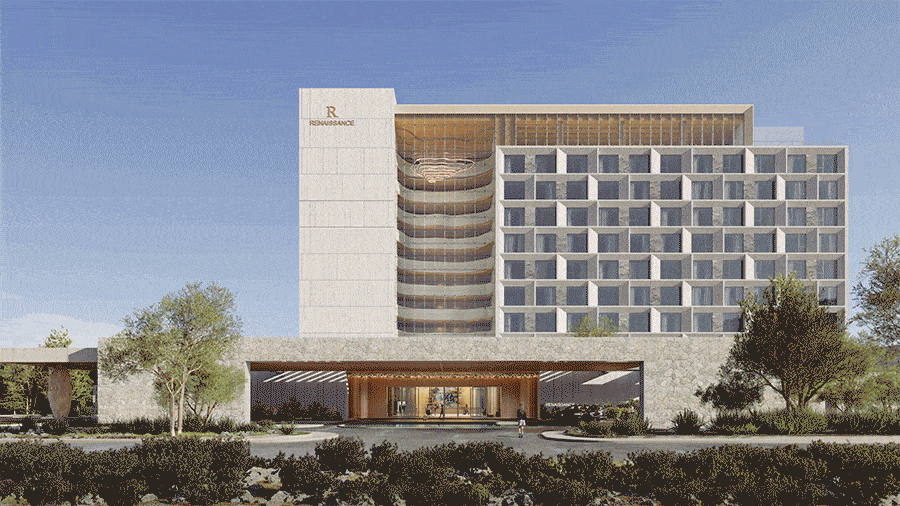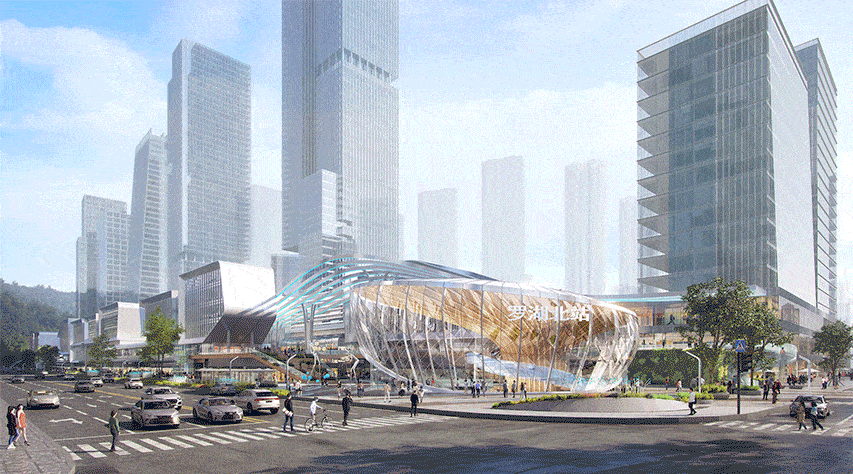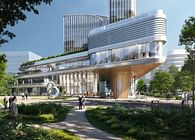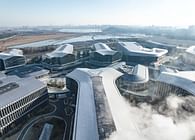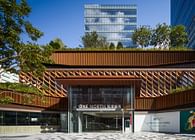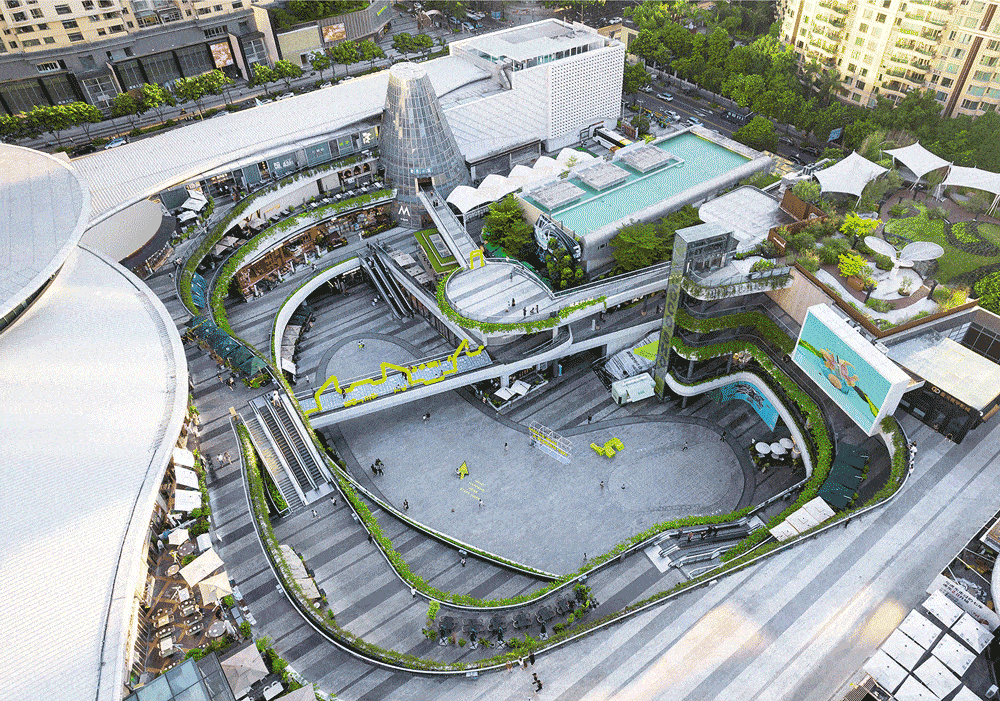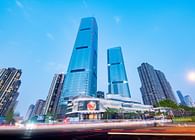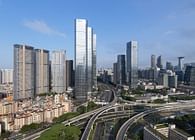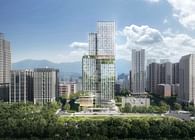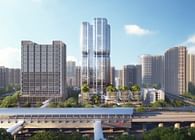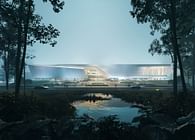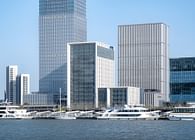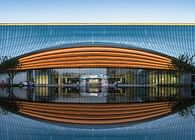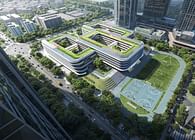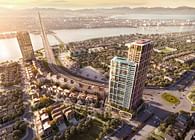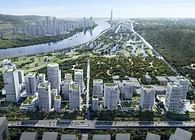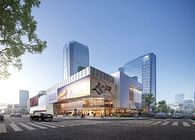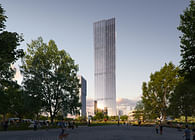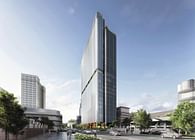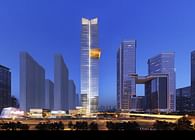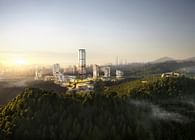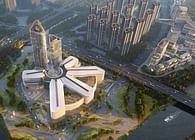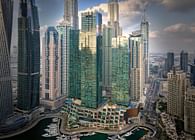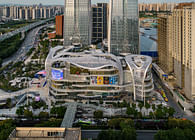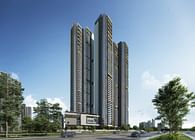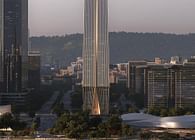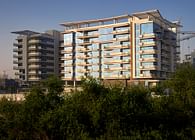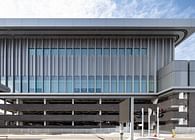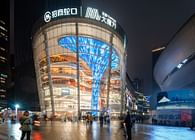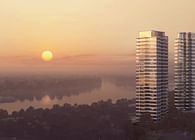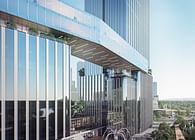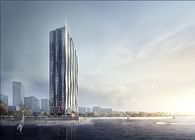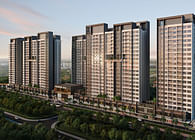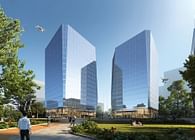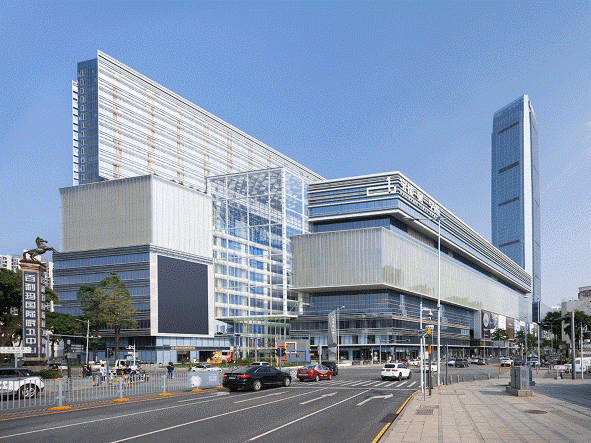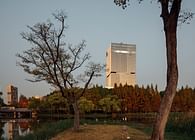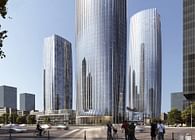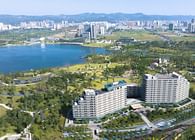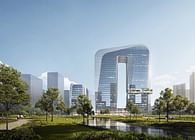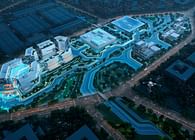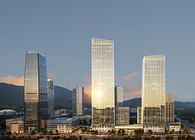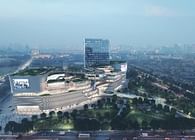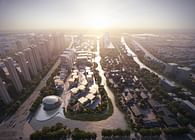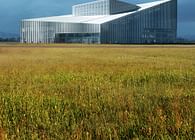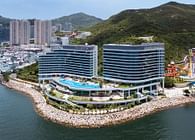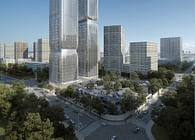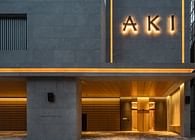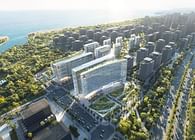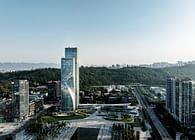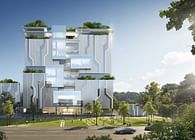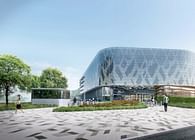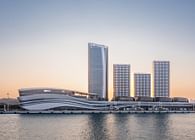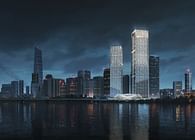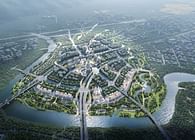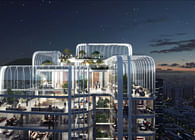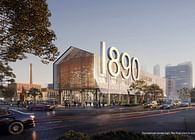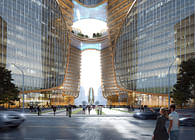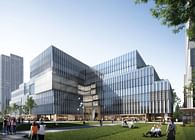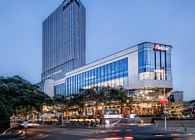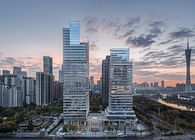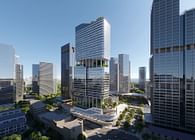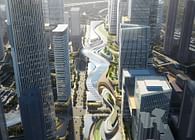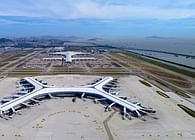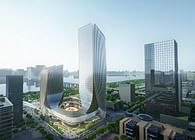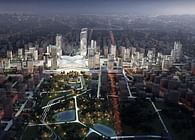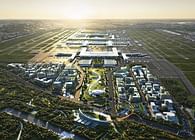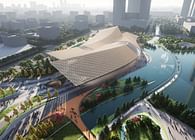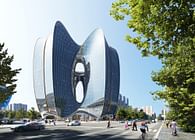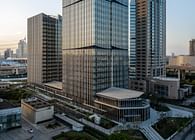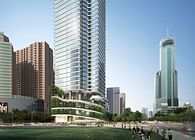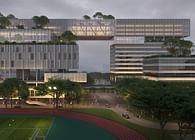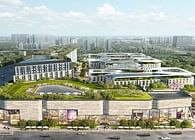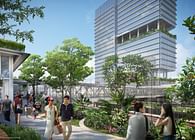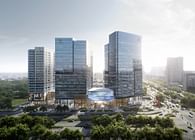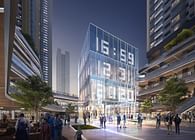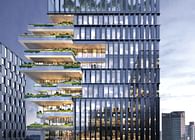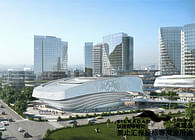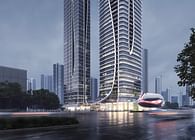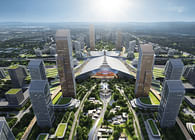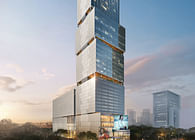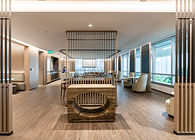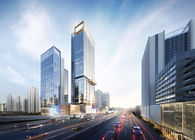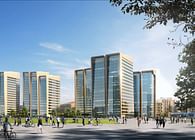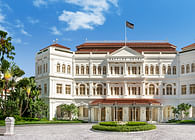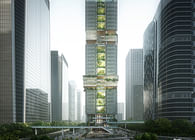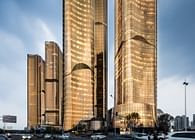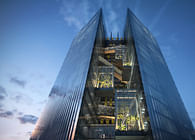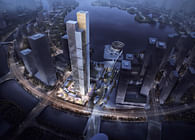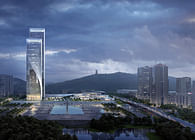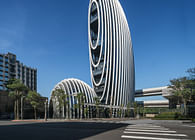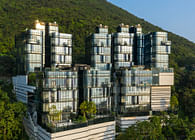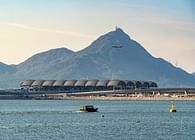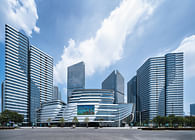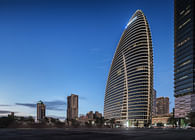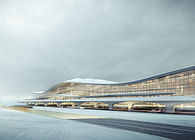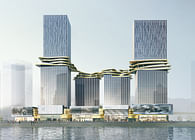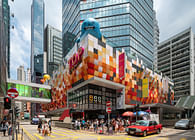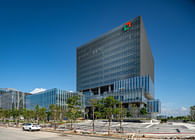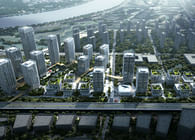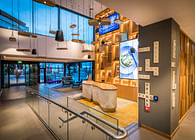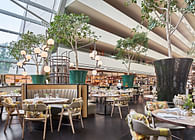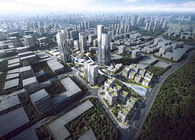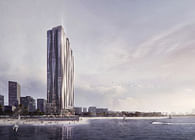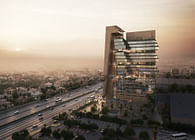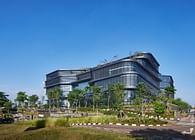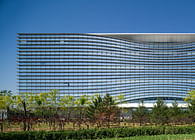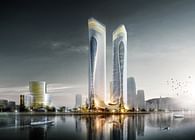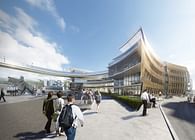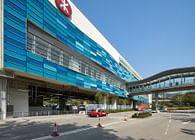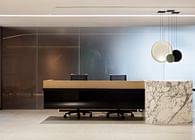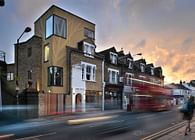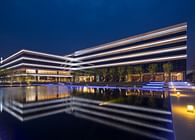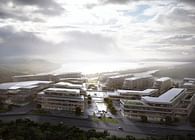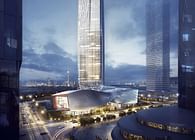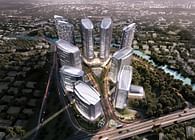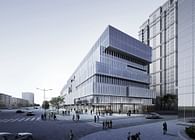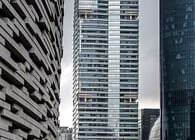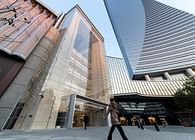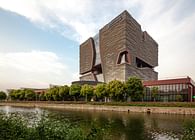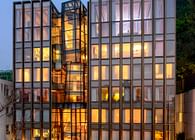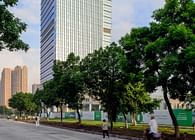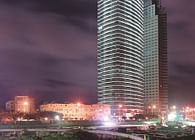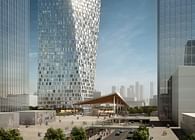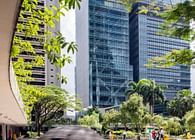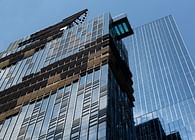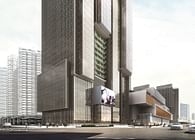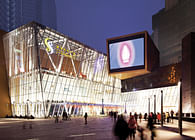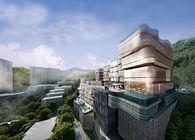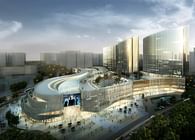
Hong Kong, HK | Singapore, SG | Beijing, CN | Shanghai, CN | Chengdu, CN | Shenzhen, CN | Macau, MO | London, GB | Dubai, AE | Abu Dhabi, AE | Seattle, WA | New Delhi, IN
Overview
Yantai is one of the major cities of the Shandong province and a significant port city in the Bohai Rim region. Designed by Aedas, China Southwest Architectural Design and Research Institute (CSWADI) and Shanghai New Era Airport Design and Research Institute, the new Terminal 2 of Yantai Penglai International Airport is situated to the south of existing Terminal 1. Opened in June 2024, the new airport terminal serves as an intelligent and sustainable gateway for the city, giving Yantai Airport an overall capacity of 23 million passengers and 200,000 tons of cargo annually.
MasterplanThe project adheres to the concept of ‘being holistic, ecological, efficient, flexible, and intelligent’. Adopting an E shaped layout with the main building parallel to the runway, the construction is phased to safeguard future flexibilit
The phased expansion can grow organically to meet the actual aviation demand. Future expansion options include a south concourse in various possible configurations, south apron, a second runway and car parks.
The Terminal 2 development introduces railway connectivity to the airport for the very first time. Besides expanding the airports catchment area and passenger throughput, the seamless transit between air and rail also greatly enhances accessibility to and from Yantai city.
As a gateway to China for Japan and Korea, Terminal 2 is equipped with 9 international / domestic swing gates, allowing the airport to flexibility deal with the international and domestic traffic peaks.
During early planning stage, the planning and placement of the terminal was studied thoroughly to fully embrace the natural contours and terrain of the site, with the landside and airside area arranged in split-levels. This minimised subsequent excavation required, and the project’s impact on the environment.
Design Inspiration
The sweeping, undulating metal roof form over the departures hall draws inspiration from the majestic Kunyu Mountain in Yantai. Three sets of seamlessly integrated skylights accentuate the roofline, giving departing passengers a tremendous first impression as they enter the check-in hall. Responding to the change in scale and structural span, the roof of the airside concourses is constructed in reinforced concrete. The overall design achieves an optimal balance between cost and functionality. The responsive heigh reduces the building’s energy use, ensuring the sustainability of the terminal.
Reminiscent of waves, the dynamic skylights and ceiling over departures hall evoke the unique coastal landscape of Yantai. The positions of the skylights correspond to the planning below, guiding passengers through the departures processes.
Once past security, passengers are greeted by the magnificent glazed diagrid dome over the airside landscaped retail atrium. This soaring, light-filled space links the international and domestic concourse levels, and brings a sense of openness and natural illumination deep into the heart of the terminal.
From the central atrium, linear overhead skylights lead passengers towards their gates, providing generous headroom over the waiting areas. The stone-clad walls and wave-forms ceiling evokes the unique costal landscape of Yantai. The landscaped gate lounges have a playful mix of furniture to let passengers relax, work and play.
Situated on the lowest floor of the terminal, the design of the baggage claim area is inspired by the timber hulls of Chinses pinks, symbolizing the thousand-year-old Maritime Silk Road. Above the baggage claim hall, the floor plate of the departures check-in and processing halls was intentionally opened up the design, giving passengers natural light as well as a view of the main roof above.
Aedas Executive Director Albert Tong shares, ‘The thoughtful incorporation of natural light, both in the departures hall and the airside atrium, gives these spaces distinctive character and a real sense or place. The terminal's ambiance creates a serene environment, and helps passengers navigate the space with ease. Drawing our inspiration from Yantai’s mountains and seascape, the dynamic form of the building is tribute to the region's unique and iconic features.’
Status: Built
Location: Yantai, CN
Firm Role: Design Architect
Additional Credits: Design Architect: Aedas in joint venture with China Southwest Architectural Design and Research Institute (CSWADI) and Shanghai New Era Airport Design and Research Institute
Design Director: Albert Tong, Executive Director
Photography: 404 nf studio






